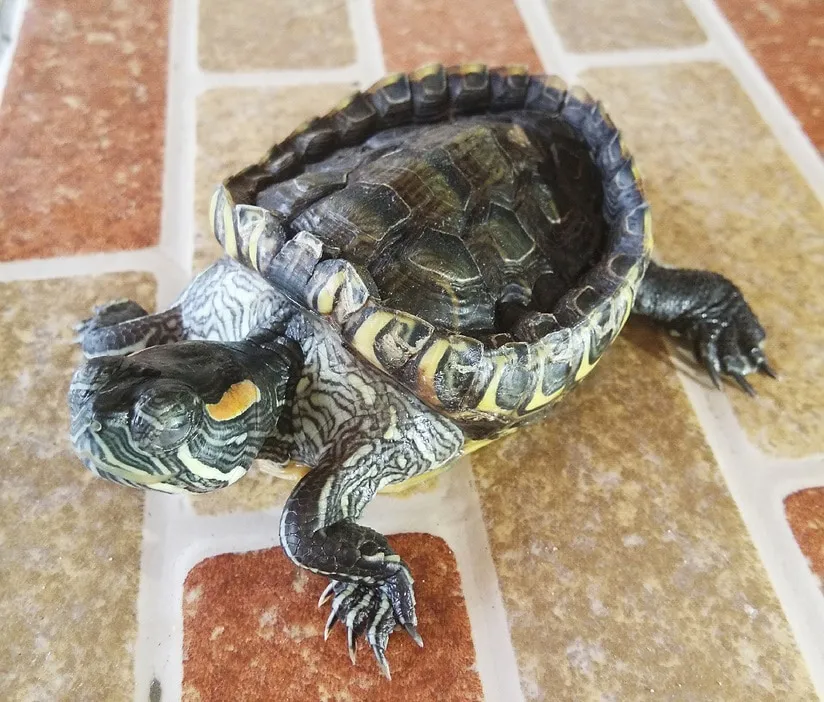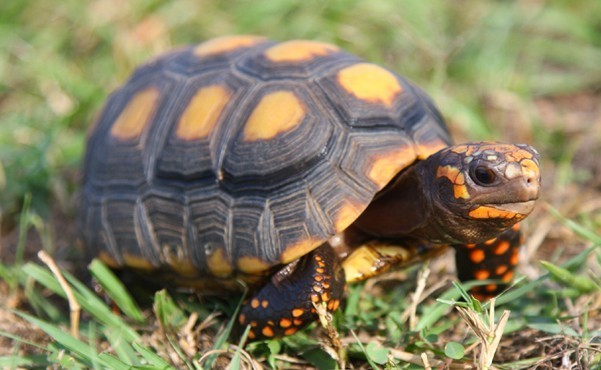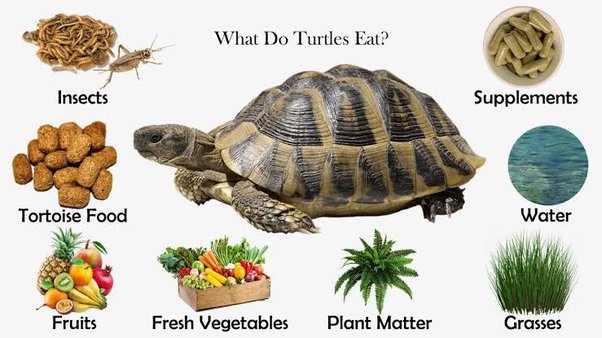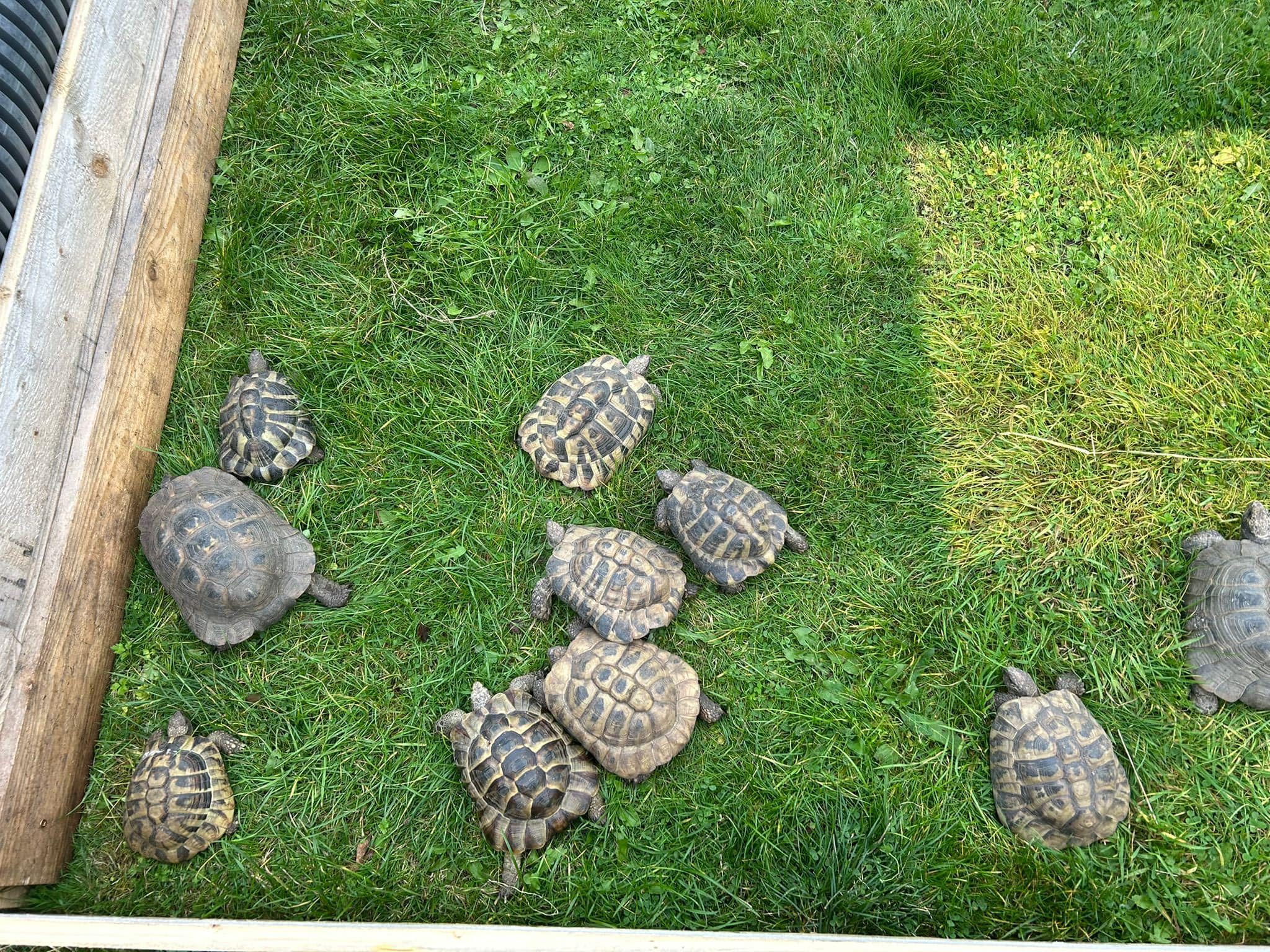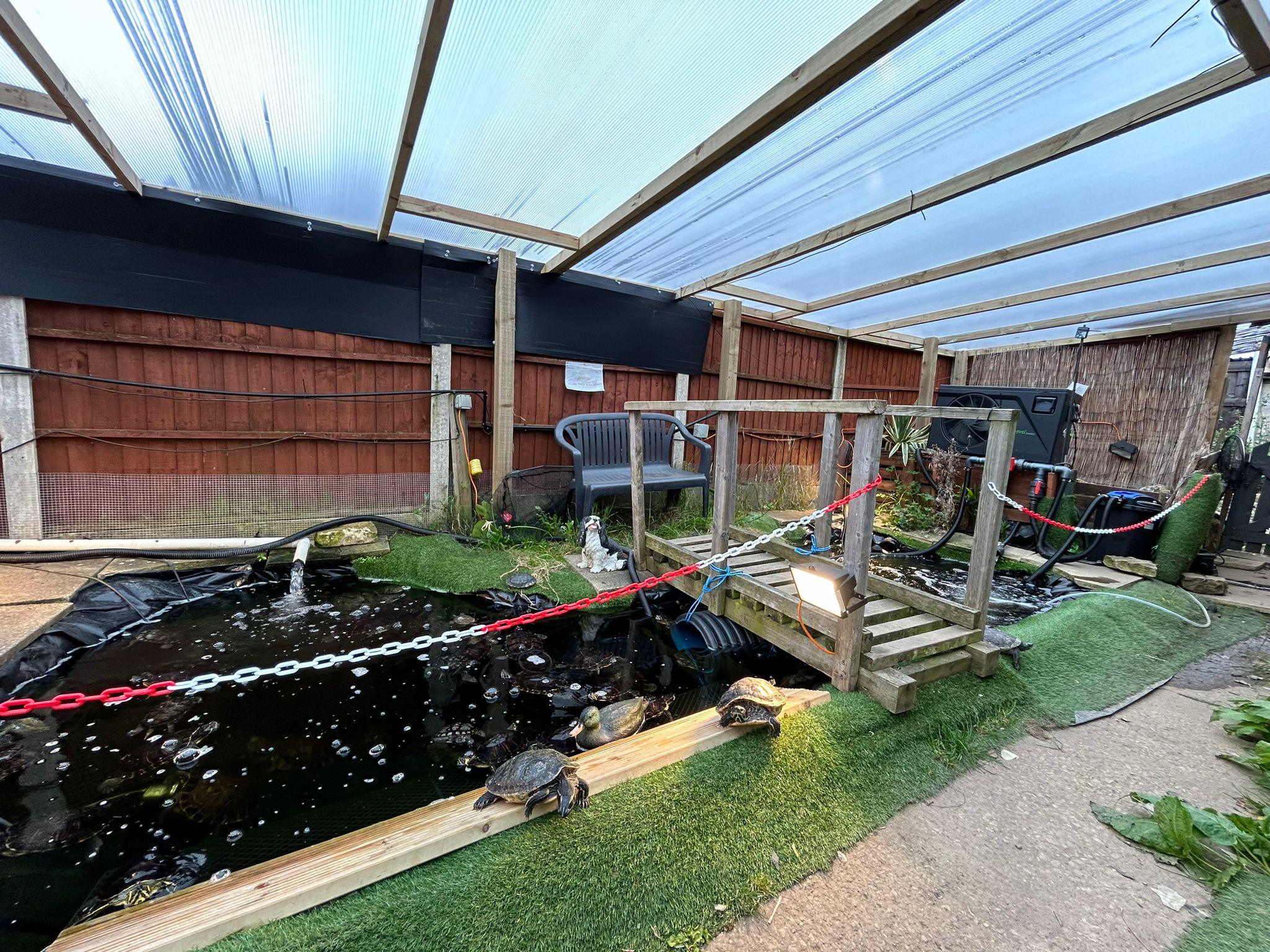
Environment
Terrapins/Turtles should be housed in large tanks, when young. You can house them in secure outdoor ponds with outdoor heating and lighting when adults. In any case, the enclosure must be secure to prevent escape and free from hazards that might cause injuries, including other pets or children.
Fish tanks are ideal and easy to keep clean, when they are young or for smaller turtles. Another option is a specially made terrapin tub. This is a large plastic tub with space for both water and a dry area for basking.
As a minimum, Terrapins/Turtles need enough water to be able to swim without touching the sides or bottom of the tank, or breaking the surface of the water. Larger volumes of water are easier to keep clean. A good sized tank allows 80 litres of water per 5cm of shell length. Therefore, a Terrapin with a 25cm long shell will need 400 litres of water.
It’s cost effective to get an enclosure large enough for the adult at the outset, then increase the water level as your Terrapin grows. You’ll need a cover that does not hold in humidity, such as wire mesh, as good ventilation is essential to reduce the risk of health problems.
Temperature
Reptiles are ectothermic, meaning they use their environment to warm up and cool down. A core aspect of reptile keeping is maintaining a thermogradient. This involves creating a basking area, where the animal can absorb warmth, while leaving another area cool to allow the Terrapin/Turtle to choose the level of heat they want.
To make a basking area, use a reptile heat lamp pointing downwards to create an area of heat large enough to warm up the whole body, and not just the shell. You’ll need to provide a dry area under the heat lamp that is big enough to support the animal and a ramp for access to it from the water, then add another dry platform in a cooler area of the tank.
All heat sources must have a guard around them to prevent injury to the Terrapin/Turtle, and should be controlled by a thermostat. Place the probe of a thermostat at the level where the animal can reach. Adjust the thermostat and check the temperature with a digital thermometer until the basking area reads 30–35°C.
Thermostats are not always accurate, so you must check the temperatures at least once a day. Use a digital thermometer or infrared thermometer under the basking area and another in the cool area. In a warm household, you can turn off the basking lamp at night to simulate night-time. But be sure that the temperature does not go below 20°C (68°F).
For the water, use an aquarium heater with a guard and an inbuilt thermostat, set to about 25°C for hatchlings, decreasing to 22°C for adults. Check this temperature daily using a waterproof thermometer. The tank should be placed in a safe location away from draughts and sources of heat (such as direct sunlight or radiators) as these can affect the temperature.
It’s also important to give the Terrapins/Turtles privacy – these are secretive animals who need lots of cover. They’ll then feel more comfortable and will come out of hiding over time.
Light
Reptiles use natural daylight to set their day and night patterns. Sunlight contains visible light and ultraviolet light (UV). One part of UV is called UVB, which allows reptiles to make vitamin D3, vital for them to store and use calcium. Another part is UVA, which is important for them to see their world in full colour.
Create a photogradient, from light to shade, by grouping your light with the heat source so the cool end is more shaded, just as in the wild. Fit a 7–12 percent UVB reptile lamp over two-thirds of the tank to create a wide area of UV. UVB decreases with distance, so follow the UVB lamp manufacturer’s recommendations on the distance between the lamp and the terrapin’s shell. Use the correct length reflector to direct the light downwards.
The UVB output decreases over time so you should check the UVB output regularly, using an appropriate UV Index (UVI) meter positioned at the level of the animal directed towards the UV lamp. Pond Terrapins?Turtles need a gradient of UVB within their enclosure ranging from UVI 3.0-5.0 in the basking area to zero in the shade. The lamp must also be replaced according to the manufacturer’s instructions.
As with heat lamps, UV lamps must always be guarded to prevent burns, or injuries should the bulb shatter.
Turn off all lights at night. You can use a simple plug-in timer: set it for 12 hours on during the day and 12 hours off at night.
Cleaning
Terrapins/Turtles need constant access to clean water to swim in. The water will need powerful filtration and regular maintenance – sliders produce lots of waste. A well set-up filter allows beneficial bacteria to grow, which break down waste naturally.
You need to carry out weekly 20 percent water changes to dilute the waste products that your filter can’t break down. It’s vital that the filter sponge is swished in the tank water before you throw it away, because this clears the filter sponge of solids but keeps the helpful bacteria. For the health of the Terrapin/Turtle and your filter, you will need to add a dechlorinating product when you replace the water.
You’ll also need to ensure that the water is low in wastes called ammonia and nitrite – you can purchase testing kits for these and you will need to check the water quality often. If your tests show that the waste levels are high, you’ll need to change half of the water every day and keep testing until conditions improve. If the waste doesn’t decrease over time then you probably need a stronger filter.
The main cause of poor water quality is over-feeding because uneaten food is left to rot at the bottom of the tank or pond. The best way to kill off harmful bugs in the water is by using a UVC steriliser.
You should always be careful as reptiles like the Terrapins/Turtles can carry salmonella.ash your hands before and after handling the slider or the equipment, to reduce the spread of infection between you and the Terrapin/Turtle.

